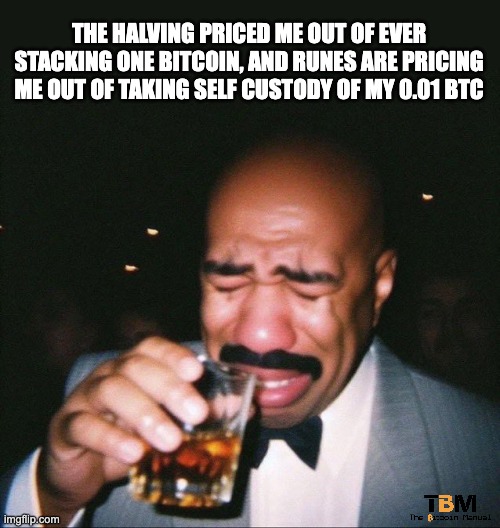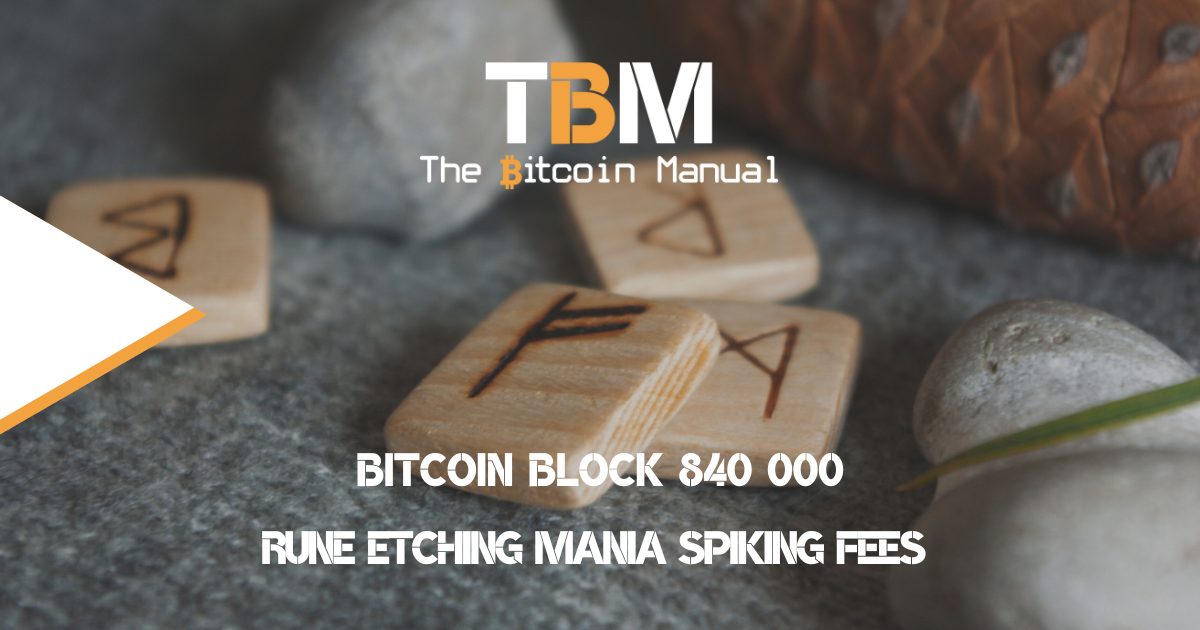The Bitcoin blockchain has just undergone its fifth halving event, marking a significant shift in the network’s ability to satisfy any growing demand for the asset. At block 840,000, the block subsidy – the incentive for miners to secure the network – was programmatically sliced in half, dropping to 3.125 BTC per block.
The latest halving ushers in Bitcoin’s 5th epoch, characterised by drastically reduced supply issuance. With fewer new coins entering circulation, this event has historically triggered bull markets as demand meets the constrained supply.
Previously, each supply shock took some time to settle in, and after a few months, we were greeted by a period of intense price discovery, potentially lasting a year or more.
This volatility could significantly impact traders’ accessibility to Bitcoin as people try to purchase the asset, and traders are looking for the best venues for liquidity or arb trading between different markets. The increased interest and activity also lead to more activity on-chain, which can lead to higher fees per block.
While fees tend to tick up after the halving, they don’t normally hockey stick the moment the halving block hits. If you woke up this morning and were checking the fees to secure a block and wondering why people are paying 600 to 100 sats per vbyte to secure a transaction in the next block, it’s not because of the halving but rather a protocol release that used the halving as a launchpad.
The first to Rune my day
The fifth halving coincides with another noteworthy development, the launch of Runes, a way to issue, transfer and mint tokens on the Bitcoin blockchain, similar to the BRC-20 token protocol that clogged up the mempool and blocks a few months ago.
The Bitcoin mempool, which acts as a waiting area for unconfirmed transactions, has recently seen a surge in activity after a period of relative calmness due to the launch of the Runes protocol.
In anticipation of the protocol release on the halving block, traders and speculators held off on minting and trading other token standards like BRC-20.
Pent up runetardation
Now that Runes is live, this pent-up demand has been unleashed, causing a frenzy of fee bidding as users compete to get their transactions processed and secure an allocation of one of those first ten coveted Runes tokens.
It reminds me of those weirdos who comment “first” on a YouTube video, like, okay, dude, weird flex. I guess those commentators have to be of the same family as those willing to pay hundreds of dollars to be first to some arbitrary meme token; yeah, well, if that’s your kink, go right ahead.
Apart from securing an allocation of deployed Runes, some traders are looking to earn the prestige of creating some of the very first Rune tokens and claiming a valuable ticker they think others would want to own.
No one knows which Runes will be popular or capture that viral moment, so the “domain squatting” for certain tickers or an allocation of those tokens is well underway. It’s all a gamble, really, perhaps you do pick a name that goes viral, and you have an allocation of Runes; you then trade it to some sucker for more than you paid in fees to mint it, and well, you profit.

Runes have it’s own cycle, the hype cycle
If you look at the current list of Runes available, you might have noticed that they all have extremely long ticker symbols by design. Since Rune tickers are unique, the idea is that allowing for longer tickers will enable the market to mature (not the traders, I doubt they ever will) gradually instead of everyone trying to claim every ticker under the sun in one go.
Upon launch, Rune tickers will have to be 13 – 28 characters long, and as certain blocks are reached, the shorter ticker creation options become available. This means that a new tier is unlocked every four months, which will likely kick off another etching cycle frenzy like the one we’re seeing right now.
Given that 4- and 3-letter tickers are a market standard, you can be sure that if this Rune protocol persists until then, we will likely see bouts of massive fee spikes to etch terms like Pepe, Doge, USDT, and the like.
Etching and fee sniping
The first incentive that encourages running up fees to absurd levels is that once a Rune is deployed, the creator sets a claim amount per transaction and a maximum supply.
As this data is indexed by servers running the Runes protocol, it becomes public knowledge, and now we’re off to the races. Platforms begin to list these tokens, and individuals try to front-run one another to claim their allocation with the etching transaction.
Bitcoin can only process a limited number of etching transactions per block. If you’re desperate to secure an allocation of a particular Rune, you are encouraged to raise the fee since you assume you’ll make it back once you sell your allocation of Rune tokens.
Miners generally order transactions by fee rate, so a higher fee means that your transaction has a better chance of securing the Rune the more you pay in fees.
While you and your fellow Rune minters are fighting it out for block space, miners are all too happy with this bidding war, which nets them extra income.

Given this first-order incentive, fees also discourage others from competing with you. Rune etchers purposefully initially set a very high fee to deter anyone from trying to snipe their Ticker symbol or token claim transaction.
After all, if your sniping attempt fails, you lose out on the fees you tried to snipe with.
Sniping is well known in the on-chain fair mint game, which is why there’s also a significant uptick in the usage of RBF, so you have the option to one-up the sniper and the sniper to do the same to the issuer, and this game of chicken can go on and on until one trader baulks at the fee price.
There is no guarantee your RUNES mints will go through!
— Ordinals Wallet (@ordinalswallet) April 18, 2024
It will be up to you to set the network fee high enough to get into the mempool before the rune you want mints out.
There is also sniping to consider.
This will absolutely be a shitshow 🤣🚀🚀🚀
You will never own one Bitcoin, and you will be happy
Runes like BRC-20 tokens have demonstrated their popularity among a certain cohort of investors, who could be classified as crypto degens. All they want to do is speculate and have fun; clearly, they have the capital to pull it off.
The whole Runes ecosystem is just a playground for these traders and doubles as a form of entertainment; it’s where they get their kicks from, and that’s fine if you know what you’re signing up for and are happy with the risk-reward possibilities.
Degens taking money off one another is part of the game, but where it becomes sinister is when these markets start to permeate outside crypto land and reach the novice trader, the normie, the Bitcoin tourist.
The hype, the price action, the unit bias and the noise can easily distract new market participants away from Bitcoin.
At over $60,000 per coin, acquiring one Bitcoin is a significant investment for the average person; globally, few people have that kind of disposable income nor the conviction to invest in magical internet money.
As for the DCA army, even though they’re starting to get priced out of their stacking goals, setting aside $1250 each month with the goal of securing one Bitcoin over a four-year cycle is a dream that is slowly dying.
The halving is a double-edged sword for the average Satoshi stacker; while it might drive the price up due to reduced supply increasing your current stacks relative purchasing power, it also pushes the whole-coin price further out of reach for those relying on purchasing fractions at a time.
Fortunately, the stacking is not over, even if the “whole-coiner” status is off the table. Unlike traditional assets, Bitcoin can be divided into smaller units called Satoshis (named after the creator, Satoshi Nakamoto), and you are free to add to your Satoshis at a rate that works for you.
The meme of having one coin will live on, but for the vast majority of people, that will never be a reality.
There simply isn’t enough Bitcoin to go around. Remember, the hard cap is 21 million, and the world’s population is 8 billion and counting.
You do the math.

A fool and his liquidity are soon parted
The game of Runes and BRC-20 works like this:
You get the early adopters who acquire their allocation by performing on-chain transactions. The technical barrier to entry is higher since you either need to use your own node to mint these tokens or trust a third-party compiler will execute the transaction properly.
Additionally, you need to take the risk of your mint transaction failing; you have to hope you’ll avoid getting sniped and finally hope you pay a fee that is less than the token allocation can trade for on an exchange.
These guys take the risk because they hope their token will become popular and that an exchange will list it so they can dump it on the laggards who aren’t tech-savvy but want to gamble and would use an exchange instead.
When a token becomes popular, an exchange needs to create a market for it. The exchange or market-maker buys up some supply from the early minters, and the latecomers to that market make up the rest of the exit liquidity until buyers are exhausted.
Then, the cycle repeats with a new token.
It hasn't even been 12 hours since Bitcoin Runes launched
— trevor.btc (@TO) April 20, 2024
And the first CEX to list $ORDI and make it a $B market cap coin announces listing SATOSHI•NAKAMOTO pic.twitter.com/xB12TsgFPx
Exchanges are always eager to earn fees and increase their trader base, so they are all too happy to list assets that the market demands, even if they are of low quality or, in this case, no quality.
Navigating the new landscape of old tricks
The coming months will be crucial for Bitcoin as spot ETFs continue to gobble up supply, and new ETFs are rolling out in other financial markets like the UK and Hong Kong.
Couple that with the reduced supply, and we have potential demand surges and supply shocks that could propel the price to new highs. The accompanying volatility might create a challenging environment for new entrants.
When Bitcoin starts to rip, brains start to switch off, and it’s all risk on; altcoins of all kinds, Runes included, will be looking for ways to get you to part with your Bitcoin or avoid purchasing Bitcoin in favour of their coin. This is how the game goes, and many Bitcoin tourists get robbed in these altcoin traps.
If you’re new to Bitcoin and feel you’re priced out of the asset, and you’re eyes are starting to wander around looking for “cheaper alternatives”, I would encourage you to stay out of this market altogether.
You’re not shopping for toothpaste; you’re seeking alpha, but at what cost? Think twice before hopping into this week’s hottest digital penny stock unless you’re willing to see your investment go to zero.
reminder to all the degens: runes, ordinals, and inscriptions are a fun sideshow
— Casey (@rodarmor) April 20, 2024
bitcoin is the main event
stay humble, stack sats
If you want to gamble and try to bag x1000, by all means, have your fill at the casino that Runes provides and get it out of your system. There’s a chance you do strike it rich, and if you don’t, you would have learned a valuable lesson that you were better off buying Bitcoin.




